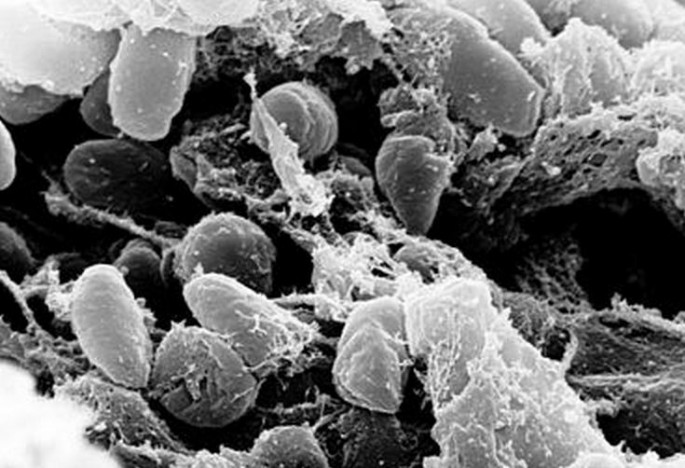The U.S. Centers for Disease Control and Prevention (CDC) has confirmed last year's outbreak of pneumonic plague -- the largest such outbreak in the United States in 90 years -- was the first known case of dog-to-human transmission of the deadly disease.
Pneumonic plague is almost 100 percent fatal if left untreated. It is more virulent and rarer than bubonic plague.
There are no available vaccines against pneumonic plague in the U.S. On the average, eight people in the U.S. are infected by pneumonic plague every year with most cases coming from Arizona, California, Colorado and New Mexico.
The outbreak detected in June 2014 started when a Colorado man brought an American pit bull terrier to a veterinary clinic. CDC said the dog suffered from drooling, jaw rigidity, fever and neurological problems. The dog was euthanized the following day after its symptoms worsened.
The owner of the dog was struck by fever and had bloody cough (or hemoptysis) four days later. He was admitted to a hospital and doctors confirmed he had been infected with pneumonic plague. He recovered after 23 days in the hospital.
CDC also confirmed that three other people had contracted the disease but all eventually recovered.
Pneumonic plague is a severe type of lung infection or an infection of the respiratory system caused by the bacterium "Yersinia pestis". On the other hand, bubonic plague is an infection of the lymphatic system.
Pneumonic plague can easily be passed on from one person to another through the air, especially when someone inhales the aerosolized bacteria. The Y. pestis bacteria can also be contracted through respiratory droplets expelled when an infected person sneezes, coughs or exhales.
This form of transmission requires direct and close contact with the person or animal suffering from the disease.
CDC warns pneumonic plague can be passed on by a person suffering from either bubonic or septicemic plague, which is an infection of the blood.
The most apparent symptom of pneumonic plague is coughing, often with hemoptysis (coughing up blood). The first signs of pneumonic plague illness are fever, headache, weakness and rapidly developing pneumonia accompanied by cough, shortness of breath, chest pain and sometimes bloody or watery sputum.
The pneumonia progresses for two to four days and may cause respiratory failure and shock. Patients will die without early treatment. Some victims die within 36 hours.
Patients are treated using antibiotics within 24 hours after diagnosis of the initial symptoms to prevent death. Effective antibiotics against pneumonic plague are tetracyclines, gentamicin, streptomycin and chloramphenicol, said Tech Times.
People that have had direct and close contact with an infected individual are treated with antibiotics for seven days. They are also told to wear a close-fitting surgical mask to prevent them from transmitting the disease.




























